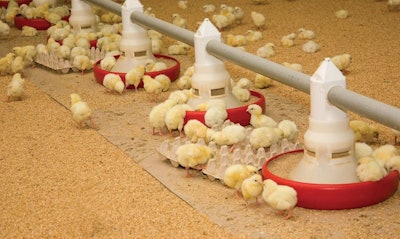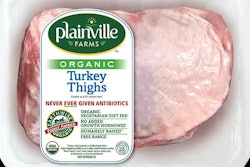
Is the era of antibiotics in the poultry industry coming to an end?
The weight of changing consumer preferences and increasing regulatory pressure are pushing the poultry industry away from using antibiotics – both non-medically important and medically important – in production. It looks like the world is trending more toward an antibiotic-free (ABF), or no antibiotics ever (NAE), landscape than ever before.
Trends in antibiotic usage
In the past few months, two major pieces of news came out that underscore this change.
First, Sanderson Farms Inc., a staunch defender of using antibiotics to protect animal health in poultry production, announced it will discontinue the use of antibiotics considered medically important for humans – gentamicin and virginiamycin – for disease prevention in its live poultry operations by March 2019.
That decision was made as the result of a scientific advisory board report commissioned by the U.S.’ third largest integrator. It concluded removing those antibiotics from live production “could represent a responsible compromise to better preserve efficacy of antibiotics important for human health, while also avoiding the adverse impacts of a (raised without antibiotics)/NAE system on chicken health and welfare.”
Second, the U.S. Food and Drug Administration (FDA) published a report showing U.S. antimicrobial sales dropped by 33 percent from 2016 to 2017. The same report said antibiotic sales for chicken production declined by 47 percent during the same period.
Regulatory pressure
The year 2017 marked the first for full enforcement of the FDA’s Veterinary Feed Directive (VFD), which banned the use of subtherapeutic levels of antibiotics for growth promotion.
From a regulatory standpoint, the concern lies with the fear that antibiotic use in animal agriculture lessens the efficacy of the same drugs in human medicine and contributes to the development of so-called superbugs. The jury is out on whether the reduction in antibiotic use is actually making a difference in antimicrobial resistance.
The customer is always right
Beyond regulations and science, the most important factor in the future of antibiotic use in the poultry industry is how consumers are behaving.
Conventional chicken sales still lead NAE and ABF by a wide margin. WATT Global Media and IRI’s 2018 U.S. Chicken Consumption Survey showed that conventional chicken sales between September 2017 and September 2018 totaled $6.42 billion while NAE/ABF sales totaled $3.54 billion.
However, conventional sales fell by 16.4 percent from the same period a year prior and by 21.9 percent from three years prior. NAE/ABF sales, on the other hand, grew by 67.5 percent from the prior year and by 195.9 percent from three years prior.
Consider how products are ultimately sold to consumers as well. Two of the world’s largest quick serve restaurant chains, Subway and McDonald’s, are currently transitioning away from serving chicken raised with antibiotics. They are doing this because consumers perceive the ABF/NAE product as better than conventional.
The takeaway
The winds of change are blowing.
I highly doubt there will ever be a complete elimination of antibiotics from chicken production or animal agriculture. When animals are sick, they need to be treated and antibiotics should be used to prevent unnecessary suffering and mortality.
However, it seems increasingly obvious to me that the use of antibiotics will decrease in the future as integrators, chicken buyers and ultimately the consumer prioritize the ABF and NAE product.
















